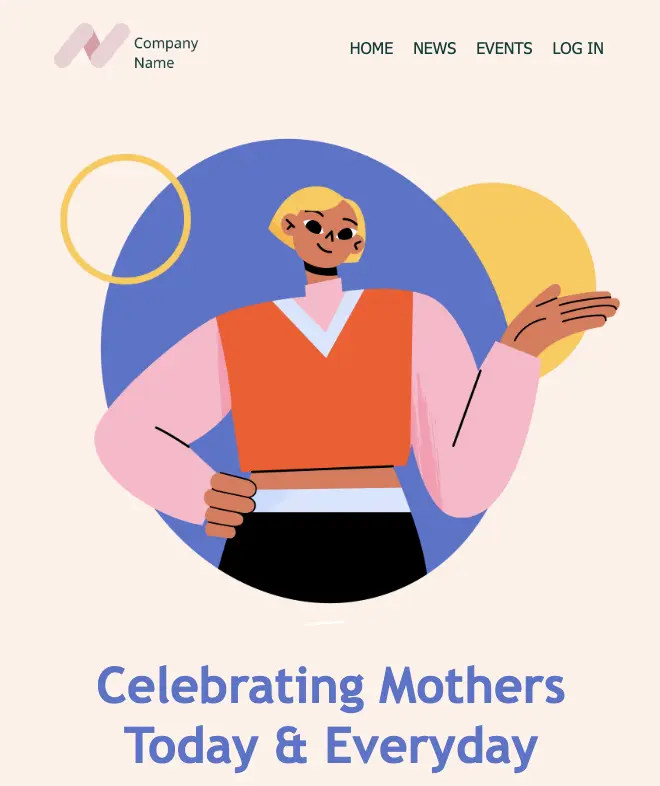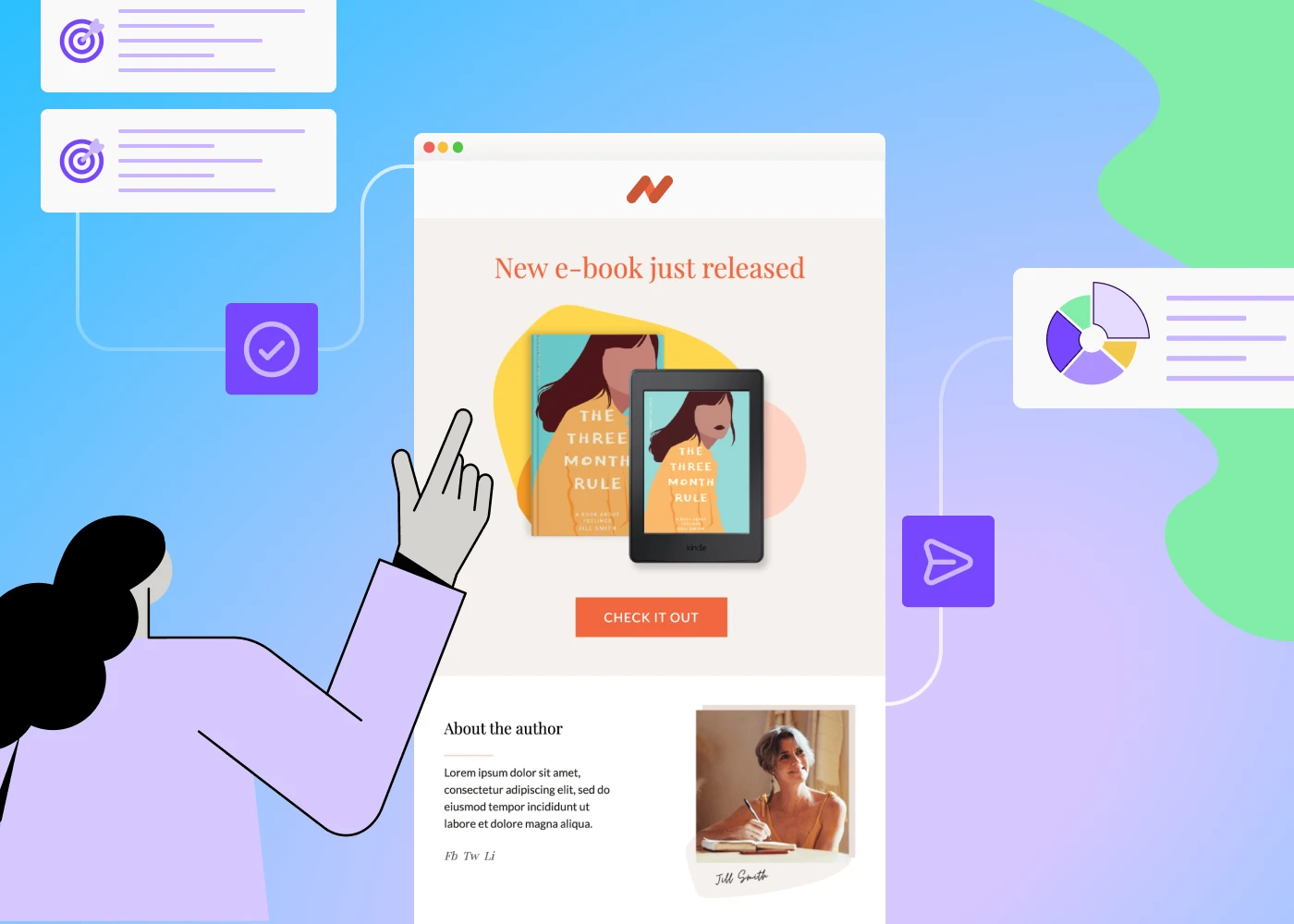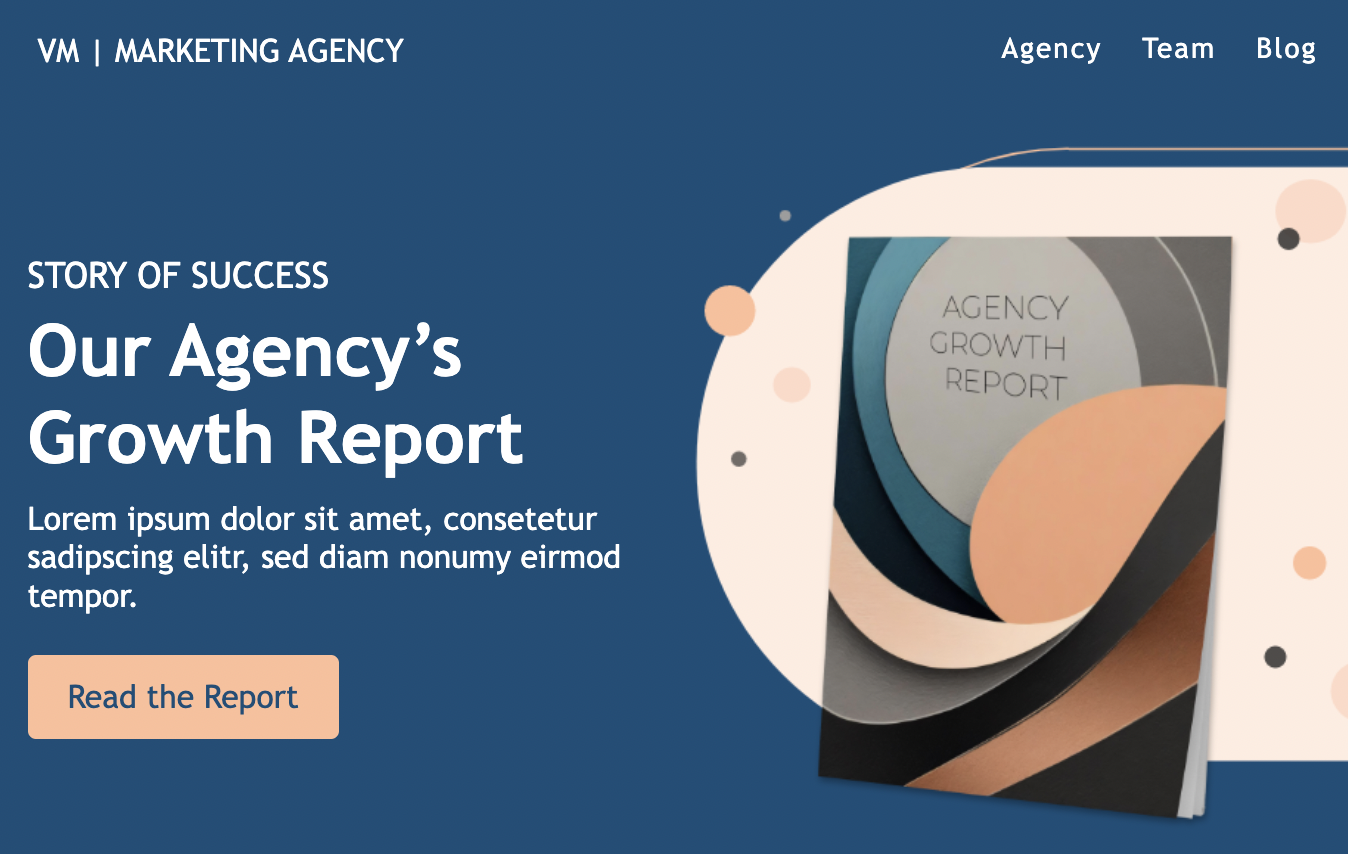In the bustling digital marketplace, newsletters have emerged as a pivotal communication tool.Newsletters serve as a way to ensure a steady flow of communication between businesses and their diverse audiences. They also serve their purpose as a way to promote products and services while establishing and nurturing relationships with customers.The versatility of newsletters, especially in email marketing, has proven to be indispensable in a marketer’s toolkit.
What is a Newsletter?
A newsletter is an email dispatched to a list of subscribers on a regular cadence. Its purpose is to provide subscribers with a digest of the latest updates, news, and content pertaining to a brand or industry.This format of communication is not just a vessel for information but also a strategy designed to keep the audience engaged, informed, and connected with the brand. According to Statista, 30% of marketers claimed that email marketing offers the highest ROI than any other marketing platform.The efficacy of email newsletters lies in their ability to deliver tailored content directly to individuals. The goal? That your brand remains etched in their minds.
What is the Purpose of a Newsletter?
The purpose of newsletters can be as varied and dynamic as the businesses that utilize them. While the overarching objective is maintaining a consistent and valuable communication channel with subscribers, the specific aims can diverge significantly.
- Brand Awareness: Elevating and maintaining the brand’s presence in the minds of consumers.
- Promotion: Highlighting new products, services, or offers to drive sales and engagement.
- Education: Offering insights, tips, and valuable content related to the industry or product offerings.
- Customer Retention: Nurturing existing customer relationships through exclusive content and offers.
Each organization should align its newsletter strategy with its unique goals. This will help ensure that the content sent to its subscribers is both purposeful and impactful.
What is the Importance of a Newsletter?
The importance of newsletters is multifaceted and offers a slew of advantages that extend beyond mere communication.
- Direct Communication: With over 4 billion email users, newsletters facilitate a direct line of communication between the business and the consumer.
- Customer Engagement: Through consistent and valuable content, newsletters keep the audience engaged, fostering a stronger relationship between them and the brand.
- Traffic and Sales: By featuring products, offers, and content, newsletters drive traffic to the website, potentially catalyzing increased sales and customer interaction.
- Audience Insights: Analyzing engagement and interaction with newsletters provides valuable insights into customer preferences and behaviors.
In essence, newsletters are a strategic asset, propelling businesses toward enhanced customer engagement, loyalty, and growth.
What’s in a Newsletter?
While crafting a newsletter, it’s important to understand the integral elements that come together to form an effective and engaging email. Each component within a newsletter plays a crucial role. Each is determined to help convey a message and influence an action, all while captivating and guiding the reader.From the initial greeting to the overall structure and CTA, each element is pivotal in the newsletter's efficacy and impact. Let’s dive into what brings a newsletter to life, ensuring it is not just read but experienced and interacted with by the audience.
Header and Branding Elements
The header, often adorned with the brand’s logo and a compelling title, serves as the initial handshake between the brand and the reader. It is said that brands have 8 seconds to attract consumers' attention, so this section plays an important role in setting the tone and establishing immediate brand recognition. It's not merely a visual element but a banner that heralds the brand’s identity and promise to its audience.Read more: 8 Simple Yet Highly Effective Tips for Your Email Header Design.
Content Sections and Modules
Content sections and modules within a newsletter help the email be digestible and seamlessly navigable. Each element should be curated to ensure the content is relevant to the reader. Employing varied content modules, such as articles, tips, or product highlights, ensures a rich and diverse content experience. The content should be laid out specifically to helpguide the reader through the newsletter and toward the desired action.
Visual Elements
Visual elements in a newsletter are the silent communicators, conveying messages and emotions through imagery, color, and design. They enhance and complement the textual content and ensure the newsletter is read and experienced.Visuals are also a great way to break down content sections to support the reader to the desired action further. Utilizing high-quality images, consistent branding colors, and visually appealing design elements further embeds the brand into the reader's consciousness.When it comes to visuals and imagery, accessibility plays an essential role. Be sure to read our latest blog on "Improving Your Email Accessibility with Beefree."
Call-to-Action Buttons and Links
When we discuss "leading a reader to a desired action," this is it. The call-to-action (CTA) buttons and links are the catalysts within a newsletter, propelling the reader from engagement to action. Whether it’s to “Shop Now,” “Read More,” or “Subscribe,” the CTA is a directive that deepens their interaction with the brand. CTAs should be visually prominent and accompanied by compelling, action-oriented language. This will help enhance their efficacy, transforming the newsletter from a passive read to an interactive experience.
Newsletter Footer
The footer in a newsletter email plays a crucial role in ensuring compliance with email marketing best practices and legal requirements.For instance, the CAN-SPAM Act (similar to GDPR Compliancein Europe) are rules and regulations for commercial email messages. Both are put in place to protect the privacy of email recipients and impose several requirements on businesses and individuals who send commercial emails.Here are some of the key provisions of these regulations include:
- Opt-Out Mechanism: Senders must provide a clear and functional way for recipients to opt out of receiving future emails. Once a recipient opts out, the sender must honor their request promptly.
- Accurate Header Information: The "From," "To," and "Reply-to" fields of email messages must accurately identify the sender and the message's routing information.
- Physical Address: Senders must include a valid physical postal address in the email. This can be a physical street address or a registered P.O. Box.
- Commercial Nature Disclosure: The email must clearly indicate that it is a commercial message and provide information about how to opt-out.
In addition, if a company uses a third party to send commercial emails, the sender and the third party can be liable for violations. This is why various sending platforms have a required footer to adhere to when developing emails.Overall, the footer serves as a digital signature, offering subscribers essential information like contact details, an unsubscribe link, and privacy policy links. This not only builds trust and transparency but also helps maintain legal compliance with regulations such as the CAN-SPAM Act.Moreover, the footer provides a last chance for engagement, including links to social media profiles, encouraging recipients to connect and interact with the brand beyond the email.
Stellar Example Newsletter
The following example comes from our very own template catalog. Our team of Designers, alongside our Email Marketer and Content Specialist, developed this template to maximize engagement. This template is perfect for organizations looking to send employees reminders and updates, welcome new team members, and celebrate special holidays - in this case, Mother's Day.Link to template: https://beefree.io/template/company-updates-mothers-day
The header
The newsletter begins with a header with a logo and a navigation bar that leads employees to learn more about news and events happening at their organization. The imagery used, as well as the text, provides immediate brand recognition and sets the stage for the content that unfolds.PRO tip: We suggest swapping out the illustration with an image of one of your company events for a more personalized newsletter.

The layout
The content sections are structured to provide a seamless navigation through varied content types. The ease of readability ensures the message is conveyed and absorbed, providing value and fostering engagement among the readers.PRO tip: As seen in this template, use color to break down content blocks and make a more engaging newsletter. Be sure to use colors that are cohesive to your brand identity and allow the CTA to stand out.
The visuals
Visual elements are strategically interspersed to enhance the content. The images and icons throughout the newsletter are used to provide additional context and add a layer of engagement and interaction within the newsletter itself.

The CTA Because this newsletter template is meant to offer different buckets of digestible information, the CTA's do vary; however, each one isnot just a directive but an invitation, enticing the reader to delve deeper.

The footerAs noted above, the footer in a newsletter is essential for compliance and to encourage engagement. Each Beefree footer is built to ensure both (but always refer back to your sending platform and your country's specific requirements to be sure).

How to Create an Effective Newsletter
Creating a standout newsletter involves smart design and a solid content strategy. It's all about making sure your message doesn't just reach the reader but also connects and sparks engagement. Good design catches the eye, while strong content keeps the reader's attention. Let's dive into key practices that will help elevate your newsletter from a basic message to an engaging, interactive communication tool.
Define and Segment Your Target Audience
Understanding and segmenting your target audience is the cornerstone for effective newsletters. It allows brands to tailor relevant, valuable, and engaging content to the right audience. Begin by defining demographic and psychographic profiles. You can do this by requesting this information directly from your readers or by using the data provided by your email marketing platform.Then, segment your audience based on parameters such as purchase history, engagement level, or geographical location. Tailoring your content to meet groups' specific needs and interests enhances relevance, helping foster a more personalized connection.
Design a Captivating Template
A captivating newsletter should be aesthetically pleasing, reflective of your brand, and conducive to readability and navigation.At Beefree, we're huge advocates of how templates and email design systems can help you and your team save time. When you're creating newsletter templates, ensure that they are responsive and offer a seamless experience across various devices and platforms, as well as on-brand with your organization. If you need assistance getting started, explore Beefree’s newsletter templates and browse our myriad designs.
Create Engaging Subject Lines
The subject line is the gateway to your newsletter, and crafting one that is both compelling and engaging is paramount in ensuring your email is opened and read. An effective subject line should spark curiosity, convey value, and be succinct enough to be easily digestible. Utilize action words, pose questions, or create a sense of urgency to entice the reader to delve into the content that awaits within your newsletter.
Focus on Quality Content
Quality content should provide substance and value to your audience. It should be a blend of informative, entertaining, and actionable content to ensure readers derive tangible value with every interaction. As mentioned earlier, for more general newsletters (like our Email Design Blog Newsletter), combining a mix of articles, tips, and product highlights helps the audience choose the content that is relevant to them. A reminder that the content that you add should still be relevant to your brand and business objectives.
Additional Newsletter Information
Here are some additional tips that can help you elevate your email marketing endeavors and improve your strategy for newsletter creation:
- Consistency in Sending: Establish and adhere to a consistent sending schedule to build anticipation and reliability among your audience.
- Balance Between Visuals and Text: Ensure a harmonious blend of text and visuals to create an engaging yet easily digestible newsletter.
- Personalization: Utilize subscriber data to tailor content and create a more personalized and relevant experience for each reader.
- Mobile Responsiveness: All emails should be design to render correctly on all screen sizes to cater to on-the-go readers and enhance user experience.
- A/B Testing: Employ A/B testing to understand subscriber preferences and optimize content for enhanced engagement and conversion.
How to Measure Newsletter Performance
Understanding and analyzing key metrics sheds light on the current performance and paves the way for optimizing future newsletters. Here are some pivotal metrics to consider:
- Open Rate: Monitor how many subscribers are opening your newsletter to gauge initial interest and the effectiveness of your subject line.
- Click-Through Rate (CTR): Analyzing the CTR provides insights into how engaging and compelling your content and CTAs are to your readers.
- Conversion Rate: Track the actions taken by the CTAs in your newsletter to understand how effectively it’s driving desired outcomes.
- Bounce Rate: Keep an eye on the bounce rate to ensure your emails are successfully delivered and identify potential issues.
- Unsubscribe Rate: Monitoring unsubscribe rates can provide insights into subscriber satisfaction and content relevance.
These metrics serve as a compass, guiding your newsletter strategy toward enhanced engagement, relevance, and impact. By continuously monitoring and adapting based on these insights, your newsletters will reach, resonate, engage, and convert your intended audience.
Newsletter Information FAQ
Let's dive into the world of newsletters with some handy FAQs! Whether you're curious about the different kinds of newsletters, their key parts, or why they're crucial for content marketing, we've got answers.Below, we explore common questions to help guide you through the ins and outs of creating and using newsletters effectively.
What are the Three Types of Newsletters?
The three primary types of newsletters are informational (focused on sharing news and updates), promotional (highlighting products, services, or offers), and relational (geared towards building and nurturing customer relationships).
What are Three Main Components of a Newsletter?
The three main components of a newsletter are the header (including title and logo), the main content (articles, updates, and promotions), and the footer (contact information, social links, and unsubscribe option).
Why is a Newsletter Important for a Content Marketing Strategy?
Newsletters are vital for content marketing. They provide businesses a cost effective way to consistently engage with their audience, nurture leads, and establish authority in their respective industries.
What is the Basic Structure of a Newsletter?
The basic structure of a newsletter consists of a headline or title, an introductory section, the main content (which can be a mix of articles, updates, and promotions), and a closing or footer section with essential links and contact information.
What are the Advantages of a Newsletter?
Newsletters offer several advantages, such as keeping audiences informed and promoting products or services. When done right, they are also effective tools for building brand loyalty, driving website traffic, and enhancing customer engagement and retention.
Start Creating Engaging and High-Performing Newsletters with Beefree
The key to crafting successful newsletters lies in the ability to create visually appealing, responsive, and user-friendly designs. That's where Beefree, a versatile email builder, comes into play.With Beefree, you can take your newsletter game to the next level. Whether you're a seasoned marketer or just getting started, Beefree offers the tools and templates you need to captivate your audience and achieve your goals. The best part? It's free! Sign up today.

















